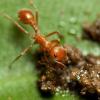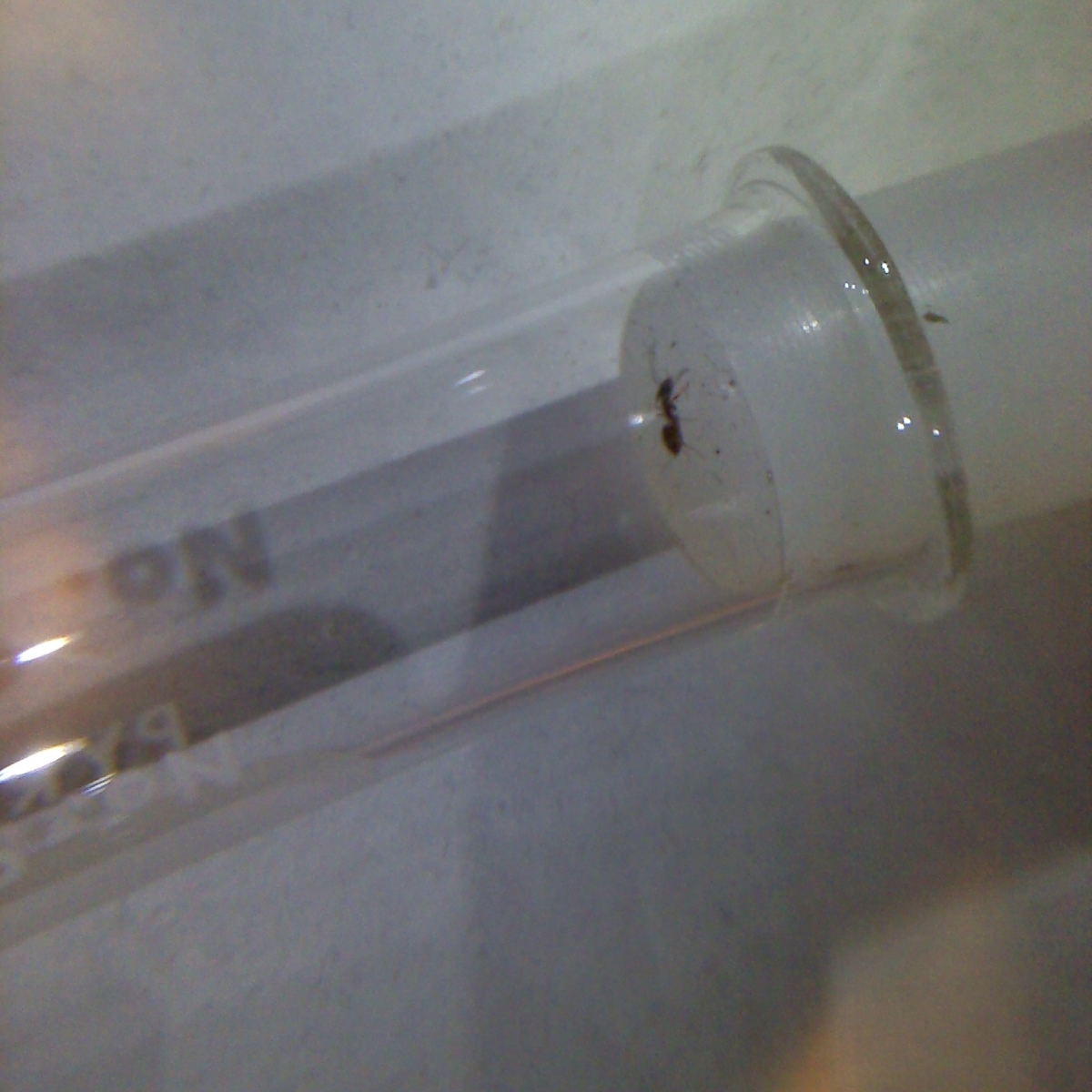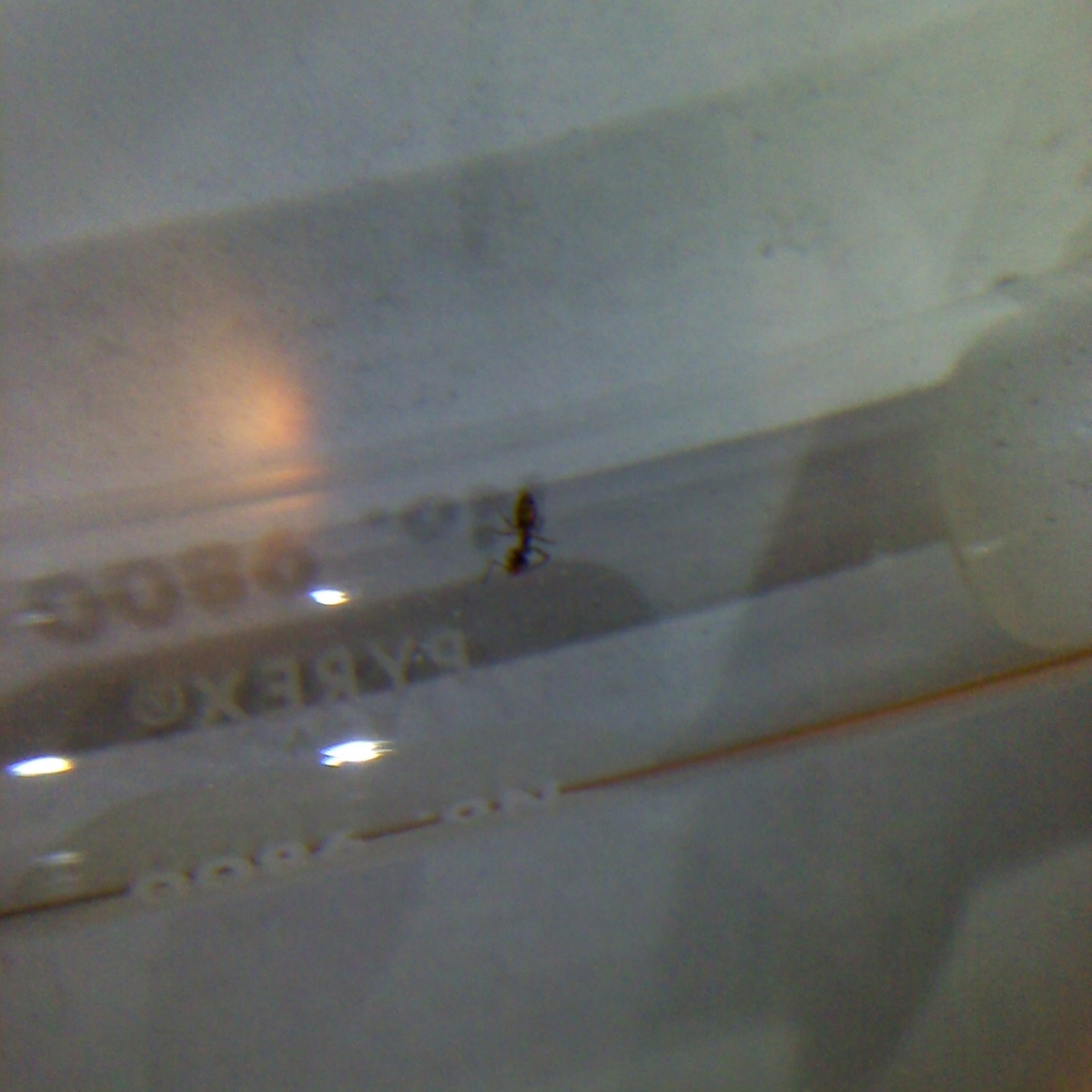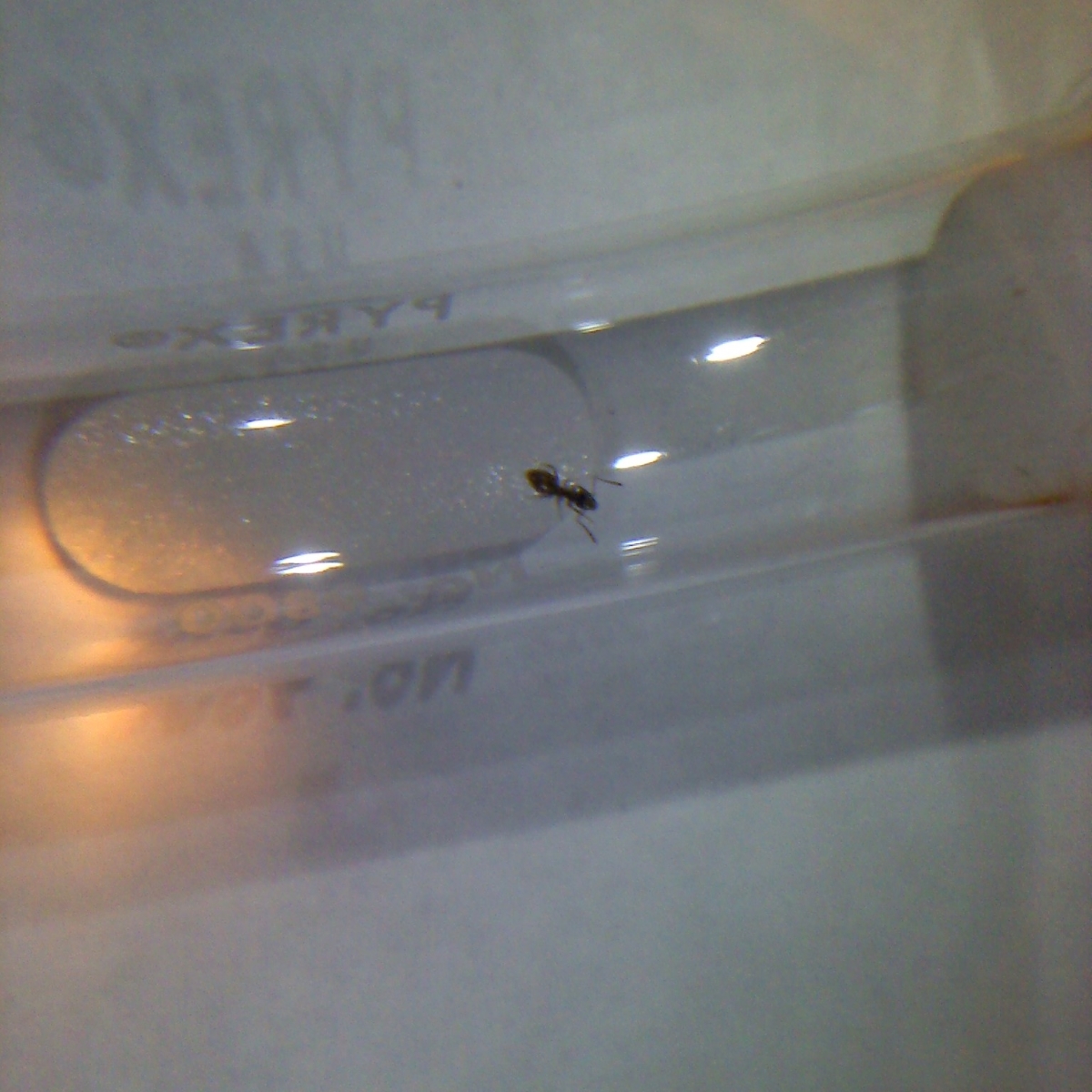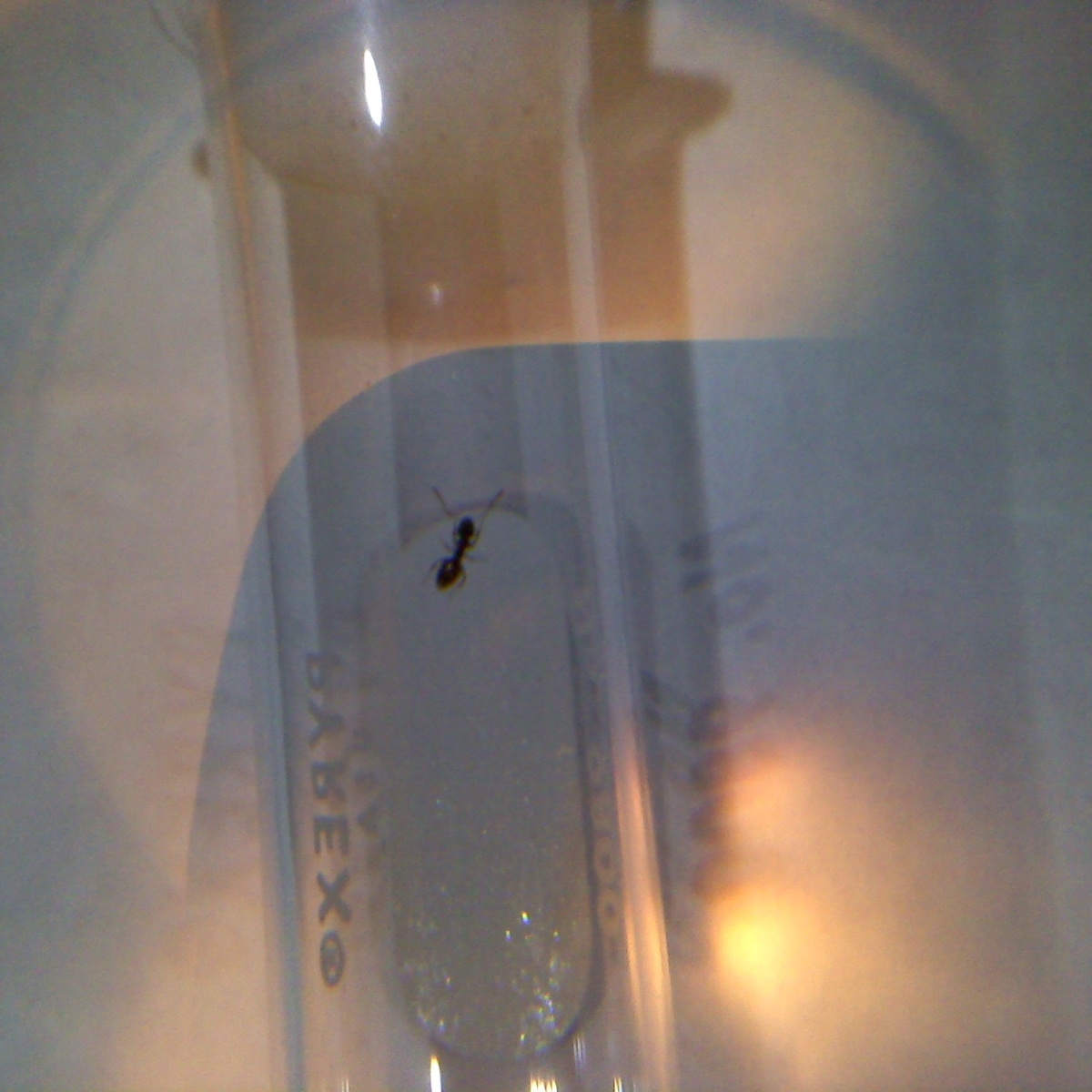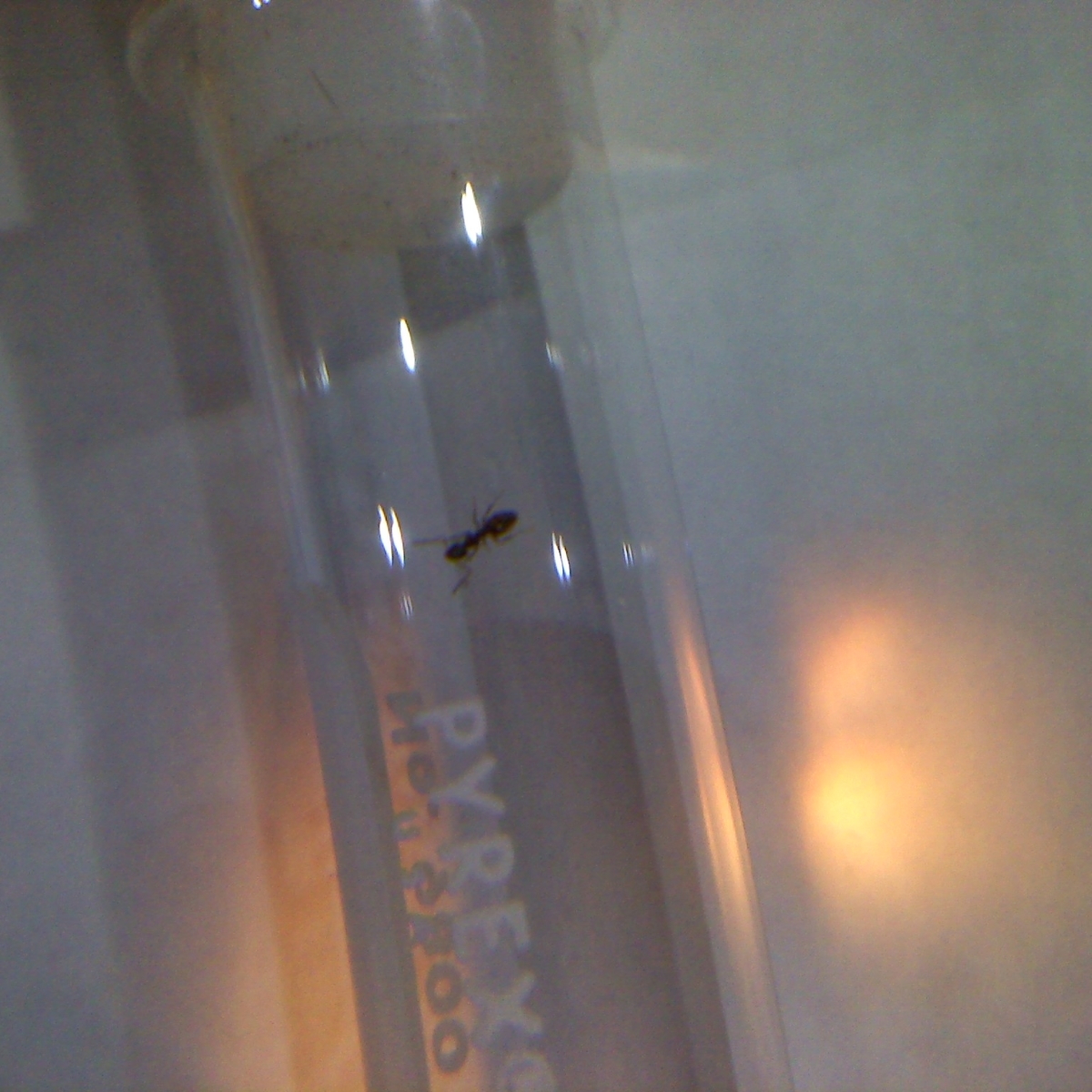First off, I want apologize for the lack of pictures. I know it's a lot harder to help without them, but sadly I can't get anything more than an ant shaped speck with my phone.
1. Location: St. Louis, Missouri, USA. More specifically, in the suburbs.
2. Late October and early November.
3. These workers were foraging on a concrete road. I can only find these ants foraging during the night and very early morning. During the day they're nowhere to be found and there are Tetramorium spE roaming around instead. It's been about 60°F when they're out.
4. They range from about 2.5 to 3.5 mm.
5. They're all a very dark brown or black color. They look rather smooth and I can't see any hair on them.
6. They're a bit small, so I can't make out many details. Some look to have striped gasters, black/dark brown and a lighter brown color. Their heads are oval and come to a slight point. Their gasters are also oval with a slight point. The legs and antennae are a little lighter brown than their bodies.
7. The workers I've captured are very skittish, pretty good climbers, and seem relatively fast. After I captured them, I gave them some sugar water, which most drank until they were a little bloated. They seem to like a lot of moisture and refused to dig unless the dirt was saturated. They also seem pretty lazy. Most of them sit around in a small tube while two or three patrol or dig.
8. I couldn't spot a nest, but I couldn't find them more than a foot or so out from the road, so I believe they're living under it or at its edge.
For the record, the only ants I've seen up close are Camponotus pennsylvanicus and Tetramorium spE, so IDing is still really tough for me. I originally thought these were some type of Lasius, but after observing them for a while I'm thinking they're Prenolepis imparis instead. While it's been relatively warm out, in the 70's during the day, I can only find these ants at the coldest time of day, when most of the other ants are in their nests. I've also heard that Prenolepis imparis is pretty lazy. Lastly, a few of them have ate enough to become slightly bloated, with their gasters being a little larger than the rest of their body.
However, once I thought I know what they were, I tried keeping them at cooler temperatures, about 60-65. When I did this, they seemed less active than when I keep them at 70-75. I'm not sure whether they're just really lazy or the higher temperature agitates them.
Does anyone have any suggestions on how I might ID them? I've read up on Prenolepis imparis a bit over the past week and I think I'd like to try to raise a colony next year. I've been capturing different types of workers to get a better understanding of how to care for ants, but I don't want to mistakenly apply my experience with these workers to a colony of actual Prenolepis imparis.






